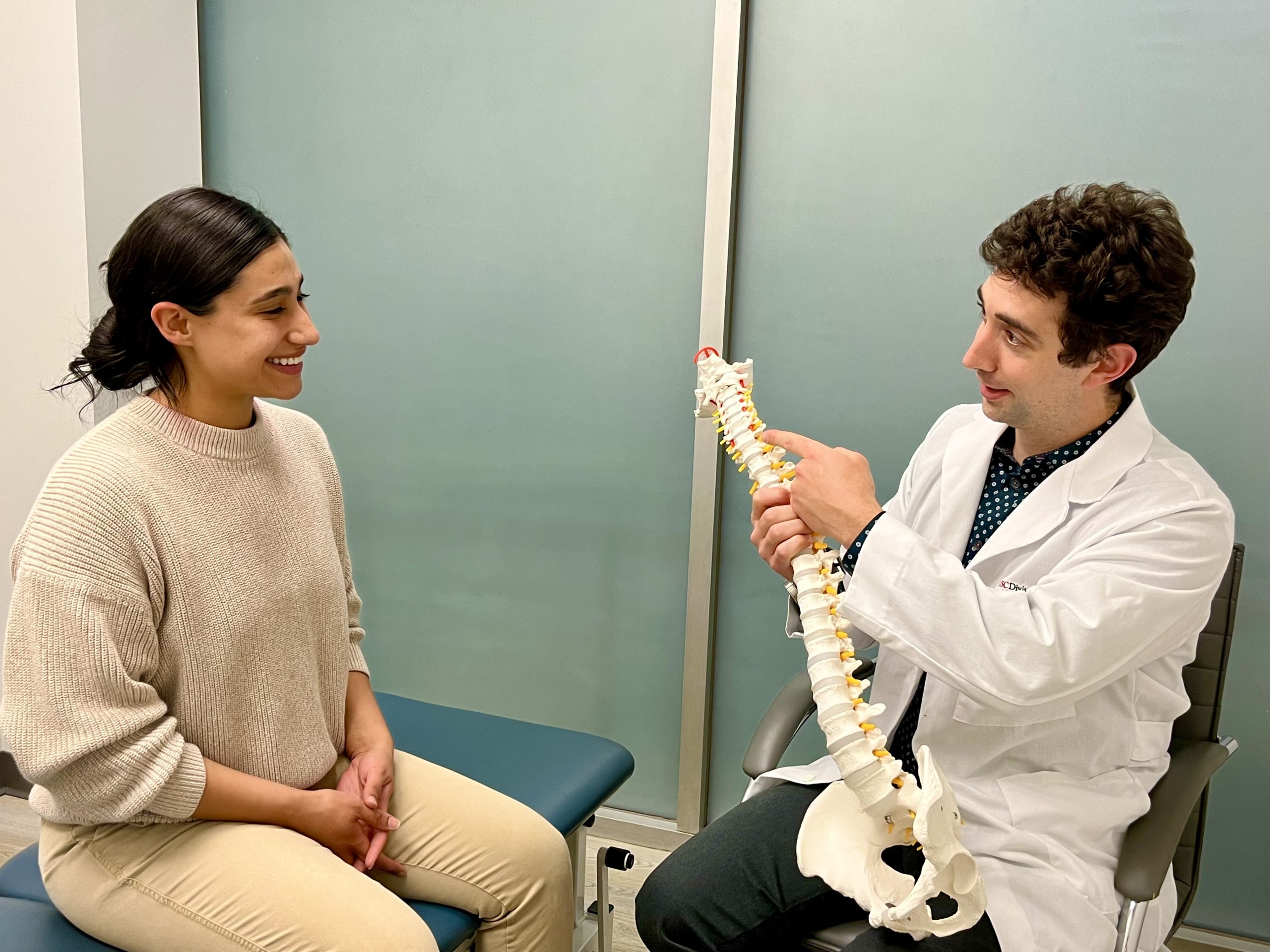10.20.2022
By uscbknpt
USC Spine Physical Therapy Fellowship Receives Accreditation

The program is just one of the nation’s three spine fellowships to be accredited by the American Board of Physical Therapy Residency and Fellowship Education.
BY JOHN HOBBS MA ’14
THE USC SPINE PHYSICAL THERAPY FELLOWSHIP HAS BEEN ACCREDITED by the American Board of Physical Therapy Residency and Fellowship Education until 2027, becoming one of just three spine fellowships in the nation to have earned such distinction.
“Accreditation means that the program has demonstrated its commitment to educational standards and ethical business practices indicative of quality, accountability and continuous improvement that enhances the physical therapy profession,” said Dr. Justin Lantz, the spine fellowship’s director and an assistant professor of clinical physical therapy.
A Better Understanding
Having completed an orthopedic manual physical therapy fellowship at the University of Illinois-Chicago, Lantz set out to start a fellowship at USC that, like his OMPT fellowship, was clinical reasoning-focused but would encompass more interdisciplinary education and training to prepare physical therapists at the primary care level in spine management.
“Spine pain, including neck and low back pain, is and continues to be a leading cause of disability in the world,” Lantz said. “I take this personally as a physical therapist and ask myself, ‘What are we doing wrong, and how can we do better?’ Hopefully, with further training and understanding of spine care, we can help tackle this problem.”
Citing that nearly 90 percent of spine pain can be managed conservatively, Lantz aimed to create a unique program to position the physical therapist as a partner in an interdisciplinary healthcare team to help patients with spine pain.
“Being that so much acute spine pain develops into chronic pain, it’s important to get the patients to the right providers at the right times for optimal outcomes,” said Lantz, who has a dual appointment as an assistant professor of clinical family medicine at the Keck School of Medicine of USC. “In order to do this, a clinician needs to understand what other clinicians do and what tools they can provide in the spectrum of spine care.”
I hope that through accreditation we will have more global visibility to continue to attract high-quality candidates, and, when the time comes, increase our admission numbers to get more spinal specialists out into the community.
It was partly this focus on interdisciplinary management that drew Assistant Professor of Clinical Physical Therapy Joseph Derian DPT ’16 to the fellowship.
“A big part of the fellowship that drew me in was understanding spinal disorders from the perspectives of other medical providers and broadening my view as a PT to make me a better primary care provider for spine problems,” said Derian, who also completed an orthopedic physical therapy residency at USC in 2017.
Derian had been practicing at USC Physical Therapy for three years when he started seeing more and more patients with spine pain and spine problems.
“I found these patients were often more complex, but for that reason were also more interesting to manage because each problem was unique,” he said.
Seeing the Bigger Picture
The Spine Physical Therapy Fellowship is a 12-month clinical program designed to accelerate the development of the clinician’s understanding and expertise in the comprehensive management of spinal disorders.
A typical week includes 32 hours of patient care, with four hours of one-on-one mentorship from an American Board of Physical Therapy Specialties certified physical therapist; four hours of MD mentorship in a multi-disciplinary clinic, teaching diagnosis and advanced management skills in the DPT and MD programs, or conducting research with world-renowned researchers and physicians at the USC Spine Center; and two hours of asynchronous didactic coursework.
“Our program is unique in that the didactic content is taught by interdisciplinary faculty,” Lantz said. “The content is taught not only by physical therapists but also leaders in psychology, family medicine, physiatry, radiology, pharmacology, research and spine surgery.
Having completed the fellowship earlier this year, Derian has noticed a huge change in how he treats patients.
“The fellowship really challenged me to think about what I do with each patient and use all the information I have to make the best-informed decision,” Derian said. “This would include information I hear from the patient, the information from the physical exam, the patient’s imaging, medications, other medical test and responses to previous treatments.”
The Value of Mentorship
Like Derian, Assistant Professor of Clinical Physical Therapy Patrick Huang DPT ’18 had completed USC’s orthopedic physical therapy residency and had been treating patients at USC Physical Therapy for a few years before becoming the second fellow to enroll in the spine physical therapy fellowship program.
“I hope to get to the point where I can call myself an expert in managing spine patients,” he said. “For me, this means being comfortable with being able to screen and identify what is going on with any patient that comes in with a chief complaint related to spine pain and being able to manage these patients.”
For Huang, the fellowship’s one-on-one mentorship has been incredibly valuable.
“It’s made me recognize that no matter what stage we are at in our careers, it’s good to have mentors because there is always somebody more experienced and we can always continue to learn,” he said. “I’m fortunate that all the mentors have been physical therapists for 10, 20-plus years and have extensive experience with treating the spine.”
Looking ahead, Lantz hopes the program can make a difference in the lives of people suffering with spinal pain.
“I hope that through accreditation we will have more global visibility to continue to attract high-quality candidates,” he said, “and when the time comes increase our admission numbers to get more spinal specialists out into the community.”

